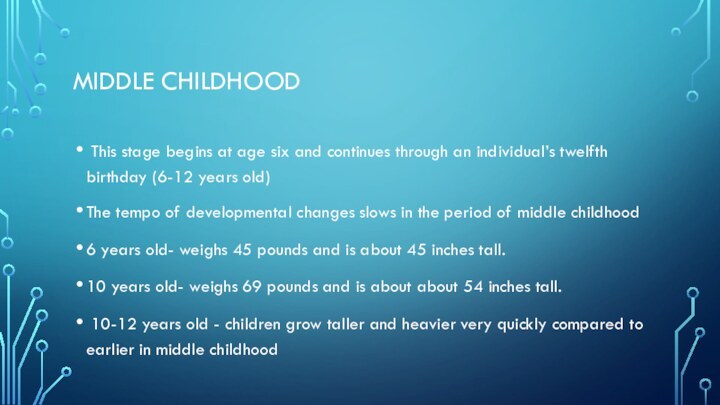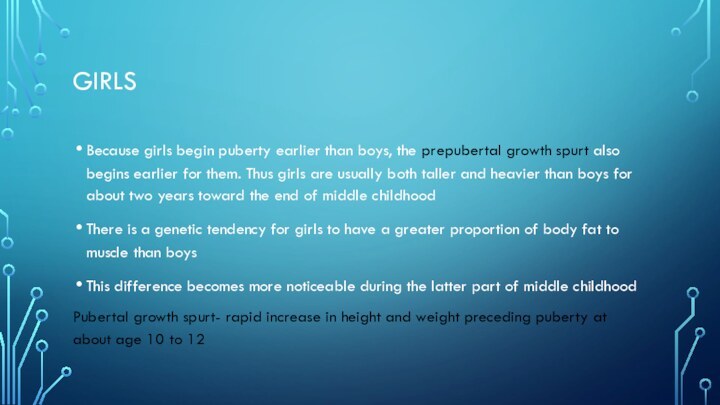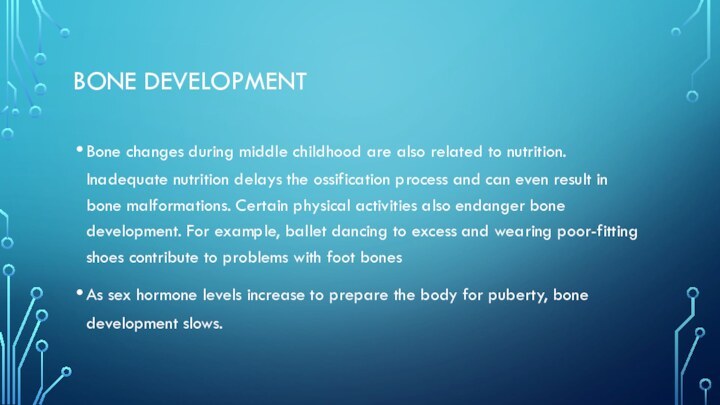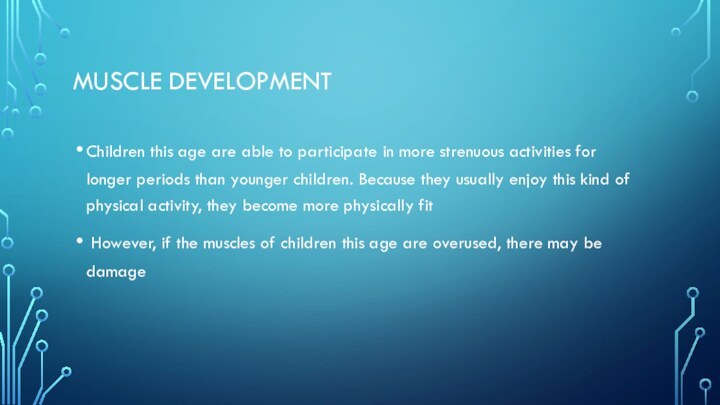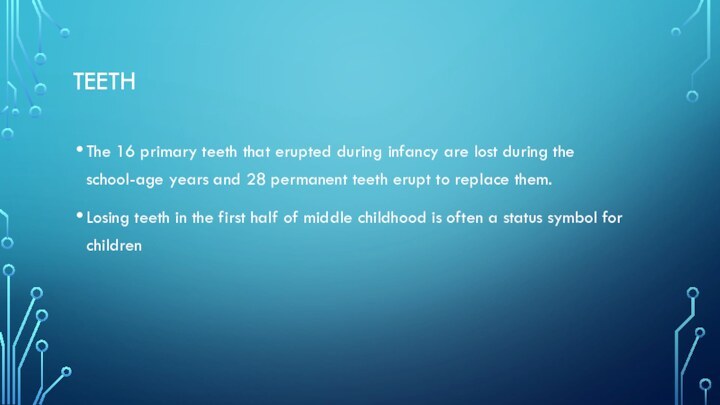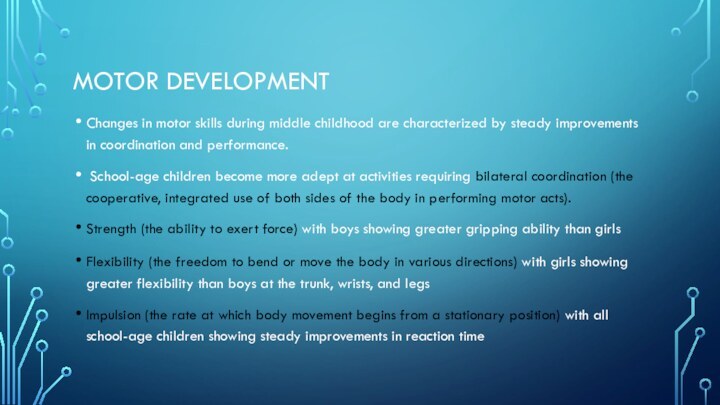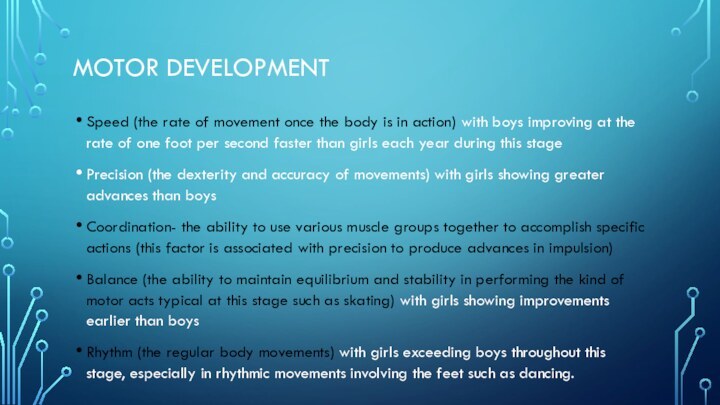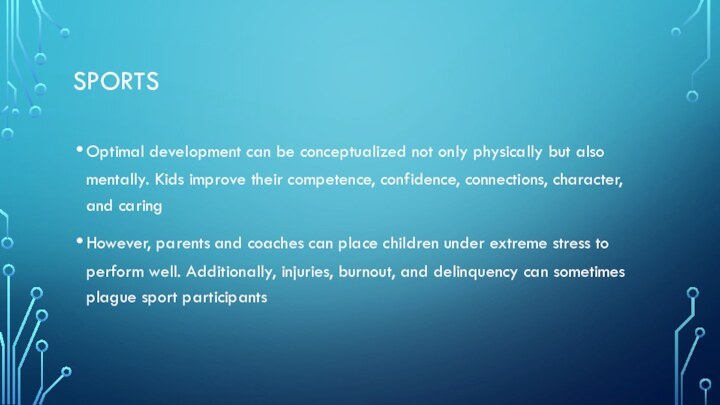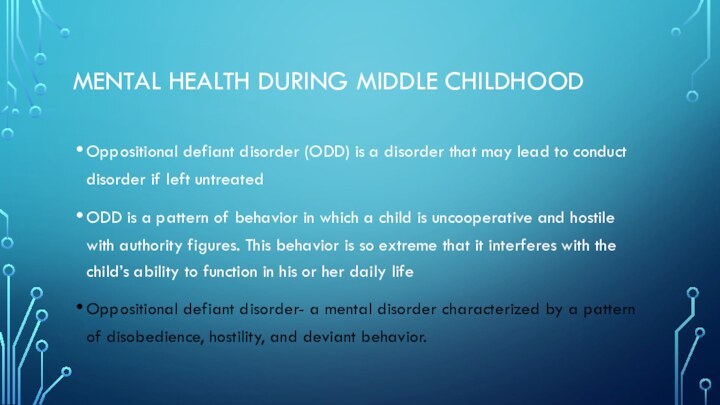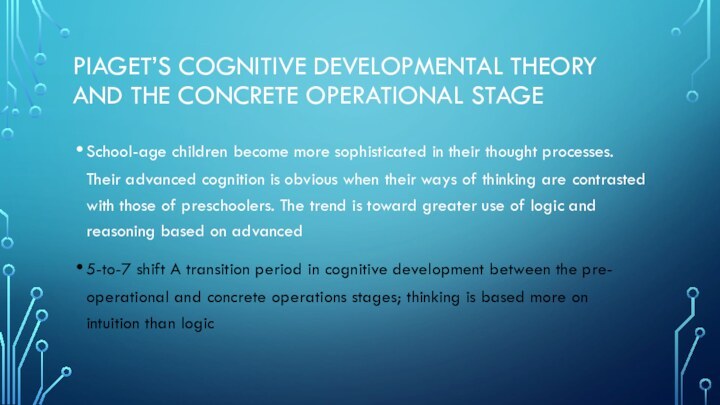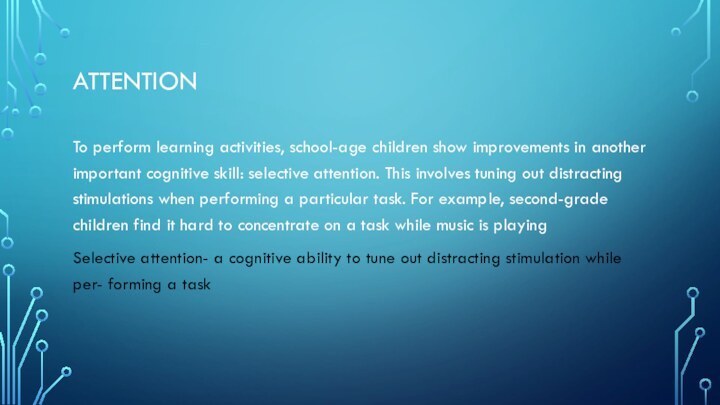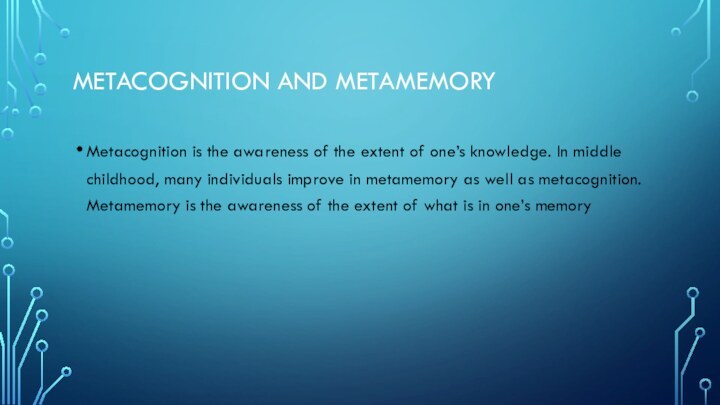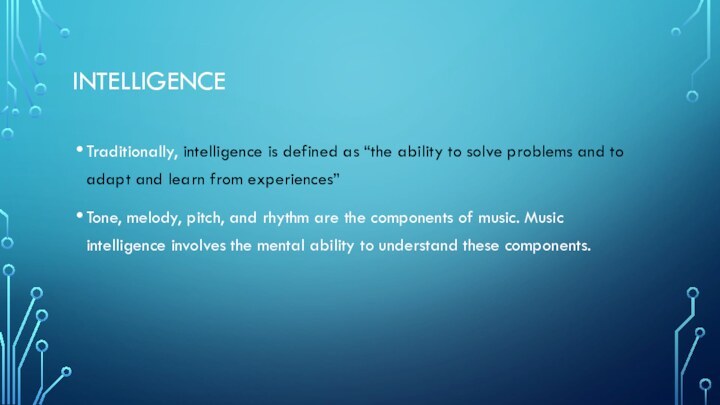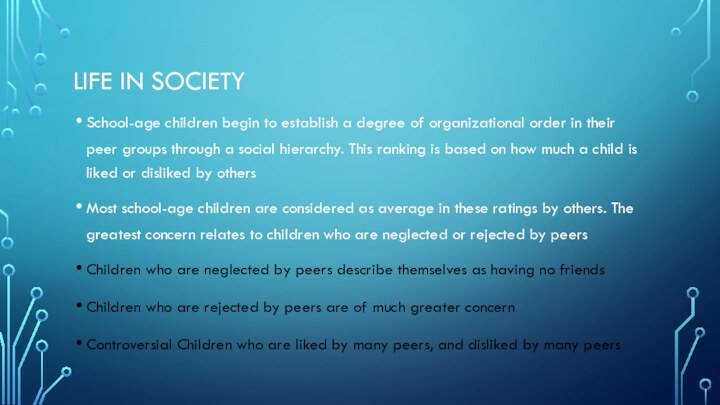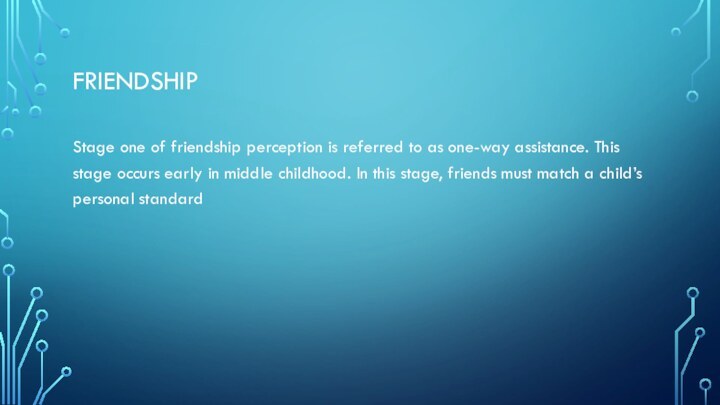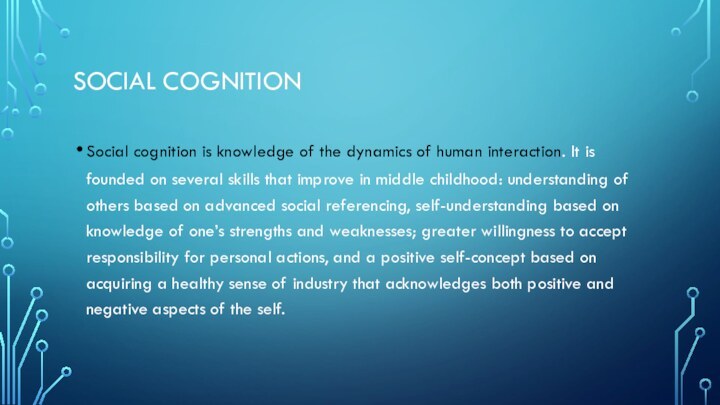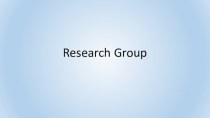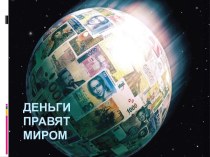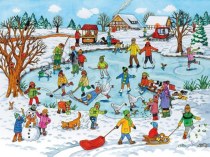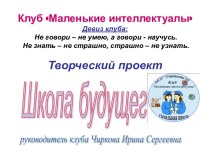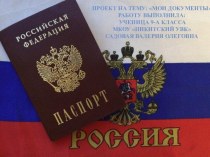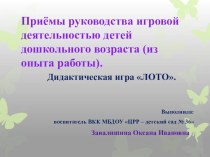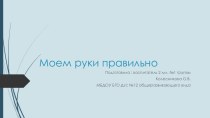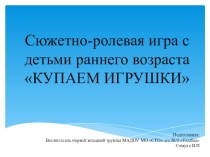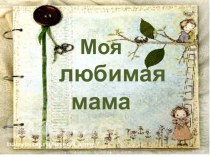Слайд 2
Middle Childhood
This stage begins at age six
and continues through an individual’s twelfth birthday (6-12 years
old)
The tempo of developmental changes slows in the period of middle childhood
6 years old- weighs 45 pounds and is about 45 inches tall.
10 years old- weighs 69 pounds and is about about 54 inches tall.
10-12 years old - children grow taller and heavier very quickly compared to earlier in middle childhood
Слайд 3
Girls
Because girls begin puberty earlier than boys, the
prepubertal growth spurt also begins earlier for them. Thus
girls are usually both taller and heavier than boys for about two years toward the end of middle childhood
There is a genetic tendency for girls to have a greater proportion of body fat to muscle than boys
This difference becomes more noticeable during the latter part of middle childhood
Pubertal growth spurt- rapid increase in height and weight preceding puberty at about age 10 to 12
Слайд 4
Growth and Size
Usually, a child who is much
taller and heavier than others the same age might
be expected by adults to also act much older.
School-age children typically select their friends on the bases of external appearance and physical competence
Girls use similar criteria choosing those who are developmentally mature for their age as leaders of groups
Слайд 5
Bone development
Bone changes during middle childhood are also
related to nutrition. Inadequate nutrition delays the ossification process
and can even result in bone malformations. Certain physical activities also endanger bone development. For example, ballet dancing to excess and wearing poor-fitting shoes contribute to problems with foot bones
As sex hormone levels increase to prepare the body for puberty, bone development slows.
Слайд 6
Muscle development
Children this age are able to participate
in more strenuous activities for longer periods than younger
children. Because they usually enjoy this kind of physical activity, they become more physically fit
However, if the muscles of children this age are overused, there may be damage
Слайд 7
Teeth
The 16 primary teeth that erupted during infancy
are lost during the school-age years and 28 permanent
teeth erupt to replace them.
Losing teeth in the first half of middle childhood is often a status symbol for children
Слайд 8
Motor development
Changes in motor skills during middle childhood
are characterized by steady improvements in coordination and performance.
School-age children become more adept at activities requiring bilateral coordination (the cooperative, integrated use of both sides of the body in performing motor acts).
Strength (the ability to exert force) with boys showing greater gripping ability than girls
Flexibility (the freedom to bend or move the body in various directions) with girls showing greater flexibility than boys at the trunk, wrists, and legs
Impulsion (the rate at which body movement begins from a stationary position) with all school-age children showing steady improvements in reaction time
Слайд 9
Motor development
Speed (the rate of movement once the
body is in action) with boys improving at the
rate of one foot per second faster than girls each year during this stage
Precision (the dexterity and accuracy of movements) with girls showing greater advances than boys
Coordination- the ability to use various muscle groups together to accomplish specific actions (this factor is associated with precision to produce advances in impulsion)
Balance (the ability to maintain equilibrium and stability in performing the kind of motor acts typical at this stage such as skating) with girls showing improvements earlier than boys
Rhythm (the regular body movements) with girls exceeding boys throughout this stage, especially in rhythmic movements involving the feet such as dancing.
Слайд 10
sports
Optimal development can be conceptualized not only physically
but also mentally. Kids improve their competence, confidence, connections,
character, and caring
However, parents and coaches can place children under extreme stress to perform well. Additionally, injuries, burnout, and delinquency can sometimes plague sport participants
Слайд 11
Mental Health During Middle Childhood
Oppositional defiant disorder (ODD)
is a disorder that may lead to conduct disorder
if left untreated
ODD is a pattern of behavior in which a child is uncooperative and hostile with authority figures. This behavior is so extreme that it interferes with the child’s ability to function in his or her daily life
Oppositional defiant disorder- a mental disorder characterized by a pattern of disobedience, hostility, and deviant behavior.
Слайд 12
PIAGET’S COGNITIVE DEVELOPMENTAL THEORY AND THE CONCRETE OPERATIONAL
STAGE
School-age children become more sophisticated in their thought processes.
Their advanced cognition is obvious when their ways of thinking are contrasted with those of preschoolers. The trend is toward greater use of logic and reasoning based on advanced
5-to-7 shift A transition period in cognitive development between the pre- operational and concrete operations stages; thinking is based more on intuition than logic
Слайд 13
Attention
To perform learning activities, school-age children show improvements
in another important cognitive skill: selective attention. This involves
tuning out distracting stimulations when performing a particular task. For example, second-grade children find it hard to concentrate on a task while music is playing
Selective attention- a cognitive ability to tune out distracting stimulation while per- forming a task
Слайд 14
Metacognition and Metamemory
Metacognition is the awareness of the
extent of one’s knowledge. In middle childhood, many individuals
improve in metamemory as well as metacognition. Metamemory is the awareness of the extent of what is in one’s memory
Слайд 15
intelligence
Traditionally, intelligence is defined as “the ability to
solve problems and to adapt and learn from experiences”
Tone,
melody, pitch, and rhythm are the components of music. Music intelligence involves the mental ability to understand these components.
Слайд 16
Mathematical and language skills
The math taught in school
is codified. Codified can be defined as math that
is written, systematically arranged, and guided by explicit rules
During the school years, children achieve metalinguistic-awareness. Metalinguistic-awareness is defined as “the capacity to use language to analyze, study, and understand language”
Children also improve in their ability to understand and use figurative language forms, such as similies, proverbs, idioms, and metaphors.
Слайд 17
Life in society
School-age children begin to establish a
degree of organizational order in their peer groups through
a social hierarchy. This ranking is based on how much a child is liked or disliked by others
Most school-age children are considered as average in these ratings by others. The greatest concern relates to children who are neglected or rejected by peers
Children who are neglected by peers describe themselves as having no friends
Children who are rejected by peers are of much greater concern
Controversial Children who are liked by many peers, and disliked by many peers
Слайд 18
friendship
Stage one of friendship perception is referred to
as one-way assistance. This stage occurs early in middle
childhood. In this stage, friends must match a child’s personal standard
Слайд 19
Developing of sense of industry
School-age children focus on
resolving a psychosocial conflict in acquiring a sense of
industry versus inferiority. A sense of industry is a positive, healthy attitude toward work and the need to master certain basic skills. A healthy attitude toward work means learning to apply oneself to an assigned task.
The sense of inferiority is a pervasive attitude of worthlessness. It is based on negative assessments of oneself, particularly in comparison with others
A child can learn a sense of industry by performing household chores such as washing the dishes

